Share - Adelaides Rozhkova.
Lesson 1. Equipment for lace-waving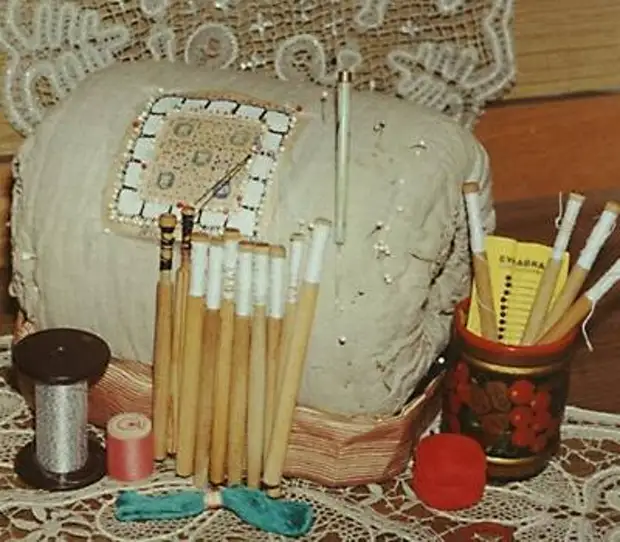
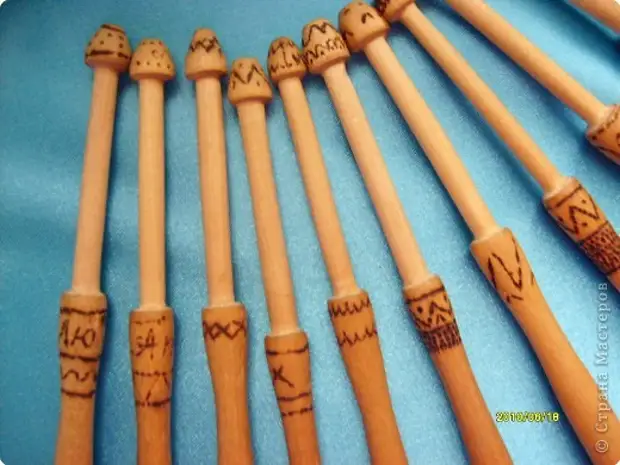
The main tool for weaving lace is a pillow-roller, a sample of a lace pattern - a slice, a bumps, with threads wound on them, and pins.
P o d u sh to aPillow-roller is the most necessary device for weaving lace.
The magnitude and shape of the pillow depends entirely on the type and size of the lace. The pillow can be manufactured from various material. In appearance, the cushion for weaving lace resembles a roller, which is covered with two covers.
The inner case is made of more dense fabric (flax, satin, tick for pen, forwarding). The magnitude of this cover is determined by the pillow value. For the most frequently used weaving lace sufficient medium pillow.
You can cook a pillow and somewhat easier way. For this, depending on the size of the proposed pillow, a dense center is selected. It may be an ordinary glass jar of various capacities or a plastic cylinder. For the initial development, it is enough to take a 1-2 liter bank. To strengthen and add the density to the plastic cylinder, there are two, necklaces are cut. They are inserted alone in the other, and it turns out the "ovalchik". For the cushion of the middle diameter is taken by the bank with a capacity of 5 liters. The bank turns into a foam rubber (more dense porolon is taken for lace). Closer to the center you can use a softer foam or its remnants. It is possible to wrap the center with a cloth, rag, but be sure to cover the foam rubber. This is done because the fabrics, the rags and the cotton pins do not hold. The magnitude of the wounded foam rubber is determined by the pin, which when drunking in the pillow should not touch the solid center, which is approximately 8-10 cm from the solid center of the pillow. To seal the foam rubber, it is desirable to pull it out additionally several tours of dense tissue. Then the magnitude of the resulting pillow sew a dense pillowcase as described above.
After tensioning the pillowcase on the pillow, the fabric, tightening the foam, is neatly wounded and removed, while the foam rubbing. The edges of the pillows are drawn up as well as when filling with sawdust. The top cushion (pillowcase) with a slight point (0.5 - 1 cm) is wider below.
You can perform a pillow of sawdust. Inside the cover is a cardboard circle. We put in the center of the cover of a dense core (an ovalian of plastic cylinders, a glass jar, etc.) the space between the dense center and the cover is covered with sawdust, hay pipe. Do not smash 3-4 cm to the edge of the cover, put the second cardboard circle and tighten with a cord cover. Pillow is ready.
P o d s t a in k and under a pillow, roller
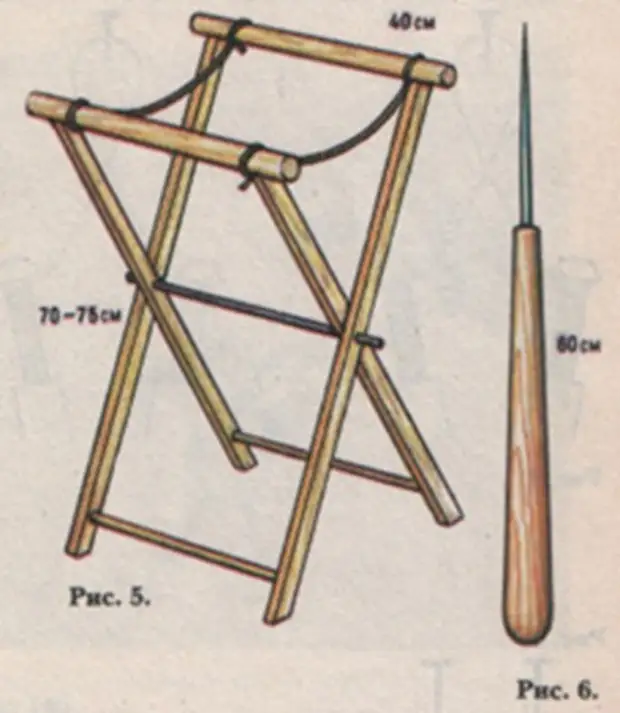
In order for the pillow to be more stable, it is put on a stand consisting of two frames, according to appearance resembling a "goat" bonded in the middle of bots. On the upper part of this stand is put on the canvas. The stand must be such a size so that you can work sitting. Average dimensions: the height of the stand is 75 cm, width - 40 cm.
Instead, it can be used with a sieve, a basket in which the roller is invested. You can also put the pillow inside the parcel box corresponding to the sizes of the pillow. You can also apply a piece of the foam rubber of a small value by turning its edges into the tube.
To about k l u sh to and
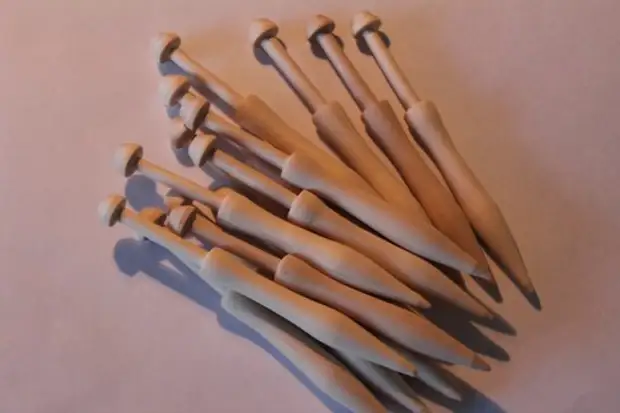
One of the main devices when weaving lace is a cough - a wooden wand with a neck, which is wound a thread.
Cockles can be made not only from wood, but also from plastics, ivory. Cockles can be accurate, but they can also be easily made using a peer knife. Wooden curls are performed from dry maple, birch, fir and lime branches. You can open the spring branches of Willow. The magnitude and shape of the coughs depends on the threads that are used when weaving - when using thick threads - massive bumps, with a large head and a slightly enlarged neck for greater thread winding. When using thin threads of bumps graceful, thinner. For the manufacture of medium-sized coughs, a piece of wood is taken with a length of 17.5 - 18 cm, in diameter up to 1.5 cm. On one side, approximately 0.5 cm from the edge to make an incision and from it 4.5 cm to make a second incision. This part of the tree is removed between the cuts so that the cervical cerch is created for winding the threads. The resulting cough in a rough form should be sanded with sandpaper, rounded the top and bottom of the curls.
It is not recommended to cover Cockles with varnish. At the same time, they firmly polluted in the work, sweat in their hands, and therefore the threads on them are contaminated. It is recommended to wash the bumps more often. And so that they do not crack and did not split, they preserved their shape, it is recommended to trust.
Can Progress their boiling in boiling vegetable oil, olive to a pleasant beige shade. Seeing at least three weeks, and then wash thoroughly with soda and soap several times to remove oil residues.
B y l and in to and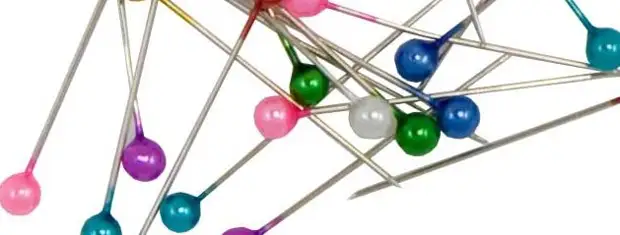
To secure work on the pillow - roller required pins. Usually the so-called decorative plastic pins are used. You can use the stationery pins with a circular head and loop. But when using the stationery pin, it is necessary to pour this loop with the "moment" by glue or epoxy, so that the threads do not engage for this loop when weeping.
When performing lace with thick threads, large decorative pins are used, up to 5 cm long with a large plastic head. To begin with, a small amount of pin is required - about a hundred. When weaving complex and large patterns, their number is greater.
The best in the use are brass pins with a circular head, because Their rust of green color is easy to clean, not leaving traces on the product.
Newly purchased pins are recommended to clean from technical pollution with rinsing in gasoline, air, alcohol. Then follow them. Dry pins need to be cleaned by piercing through an eraser - eraser used when erasing pencil records with paper. It should be remembered that when operating sweaty, wet, metal pins rust, and subsequently rust can manifest itself on lace.
In the mea and l
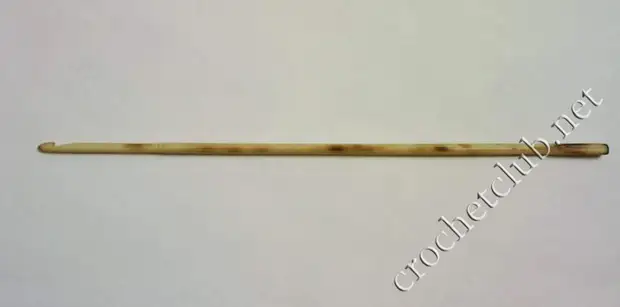
When working, the knitted hook, the magnitude of the head of which is determined by the value of the threads used when weaving the threads and pins is applied when working. When weaving, the hook "0" is most often used. The hook number is determined by its head (beard), the size of the recesses in the working part of the hook.
Knitting hook can be made and yourself. For this, the appropriate sewing needle is taken. The sharp end of it is somewhat compact and then the gap is made from this end. The sharp end is spinning, sharpened. For good retention of the threads, it is necessary to pull out the edge of the gap and side grooves. With their absence, the thread slides from the hook during operation. The stupid end of the needle is warmed up, as in the manufacture of the needle for the oral, is inserted into the heated state into the plastic rod. For firmware - the end of the work is conveniently used a loop hook, which serves to raise loops of the kapron stocking.
With to about l about toSkolok is a technical design of lace on paper or cardboard. The pattern on the vaccine is chipped or printed by points (with a mass production of chips) on dense and sufficiently elastic paper. The points indicate the places where the pins should be stuck for the formation of a lace pattern. Initially, the lace pattern is drawn by mascara or ink. Pencil for this work is not suitable, as it is erased, makes a dirty work. In the future, the tip is guided only by one Points of oqot or phones As they are called. To facilitate visual work, a cardboard or paper for scrolls take blue or green colors is recommended.
Skole serves as a canvae for lace weaving. To obtain a spare cleaner, when weaving under the vacuum, put the same paper and in the process of work, piercing both layers, get a second chill. Option must be carried out with thin lines. It should be remembered that the most important points of the okey are the most important, and on them you can already draw a drawing of a lace. In the manufacture of a lace cleaner, great accuracy is required and accuracy. From how it is completed, the quality of lace will largely depend. Usually paper cleaned lace is enough for no more than three times.
To increase the service life of a lace cleaner, save the vacuum (when tightening the thread, it breaks through), a soft paper or cardboard is put under the vacuum. Increasing the service life of the vaccine can be coated with a transparent polyethylene, the glued - which is simultaneously protected from the pollution of lace from ink, carcasses, etc., which are described with a lace pattern on a vacuum.
After repeated use, it can be "reinted", to restore it as follows. Old pin to put on a flat surface with an invalid side up. Shoot it with hot boiled potatoes and immediately attach a newspaper. Skolok can still serve.
In modern times. At the time of widespread, xerox and computers can be obtained by copying or photocopying from the book. All our chips are given on the scale of millimeters 1 to 1. Specifically indicated when performing a vaccine scale, the point of the okey - you can recharge the chips directly from the book, making an amendment on the scale of the vaccine (products). It is even easier - you can perform photocopying or through the computer - directly lace and perform on this vaccine.
ThicksFor lace-haired Cotton, silk (natural or artificial), linen or woolen, kapron or mixed threads are used.
Threads coming on sale have various packaging: coils, tangles, paper and plastic cartridges. On each coil, Motke, Bobin, Cone, the couphe is a label on which the thickness of the thread (its number) is indicated, the length of the threads in this motkey, the coil, reel, the number of additions, the GOST and the factory - the manufacturer.
A source
